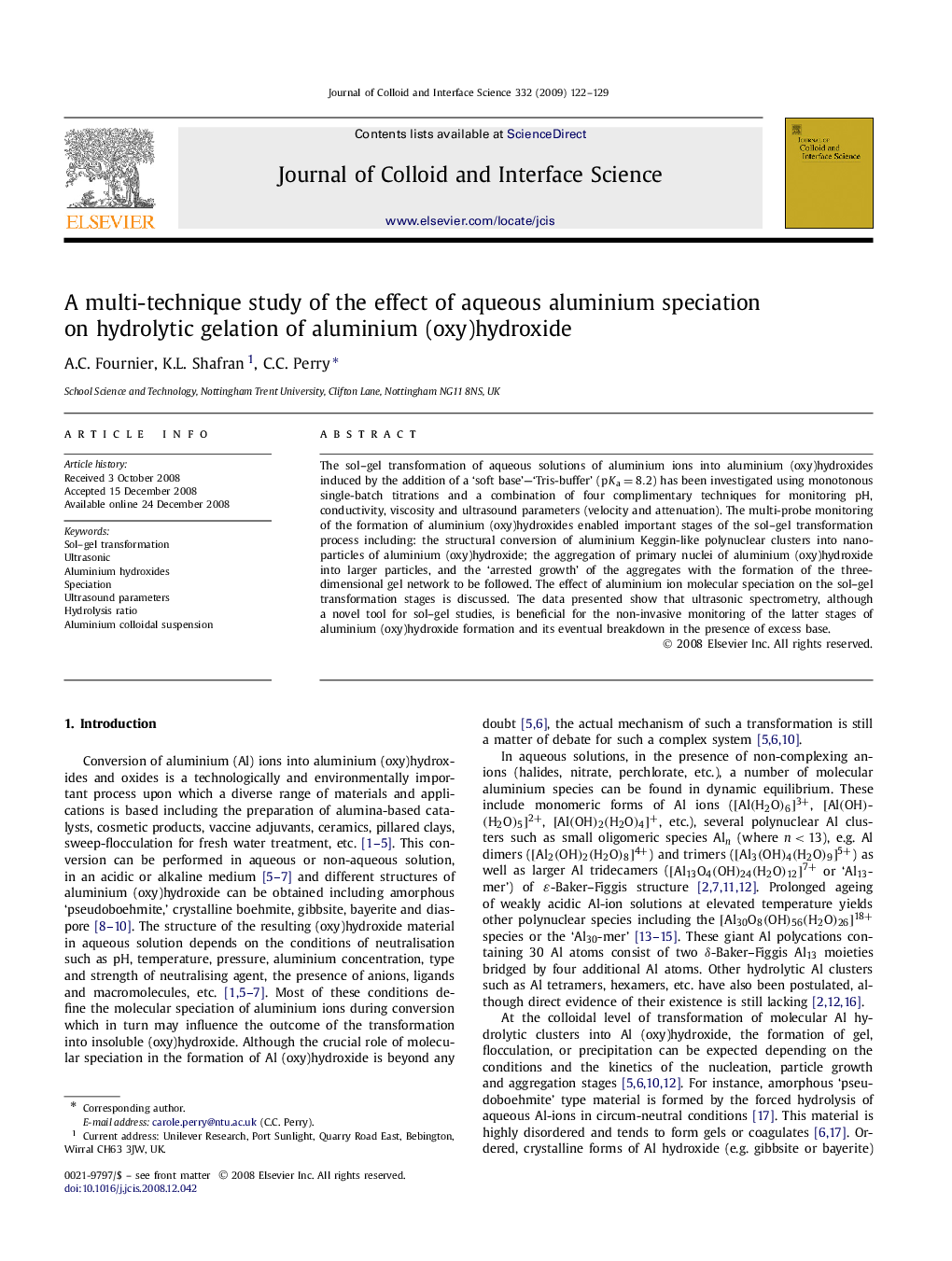| Article ID | Journal | Published Year | Pages | File Type |
|---|---|---|---|---|
| 610493 | Journal of Colloid and Interface Science | 2009 | 8 Pages |
The sol–gel transformation of aqueous solutions of aluminium ions into aluminium (oxy)hydroxides induced by the addition of a ‘soft base’—‘Tris-buffer’ (pKa=8.2pKa=8.2) has been investigated using monotonous single-batch titrations and a combination of four complimentary techniques for monitoring pH, conductivity, viscosity and ultrasound parameters (velocity and attenuation). The multi-probe monitoring of the formation of aluminium (oxy)hydroxides enabled important stages of the sol–gel transformation process including: the structural conversion of aluminium Keggin-like polynuclear clusters into nanoparticles of aluminium (oxy)hydroxide; the aggregation of primary nuclei of aluminium (oxy)hydroxide into larger particles, and the ‘arrested growth’ of the aggregates with the formation of the three-dimensional gel network to be followed. The effect of aluminium ion molecular speciation on the sol–gel transformation stages is discussed. The data presented show that ultrasonic spectrometry, although a novel tool for sol–gel studies, is beneficial for the non-invasive monitoring of the latter stages of aluminium (oxy)hydroxide formation and its eventual breakdown in the presence of excess base.
Graphical abstractThe hydrolytic gelation of Al(O)OH has been followed using pH, conductivity, viscometry and ultrasonic spectrometry measurements. Ultrasonic spectrometry is especially useful for monitoring the later stages of Al(O)OH formation.Figure optionsDownload full-size imageDownload as PowerPoint slide
